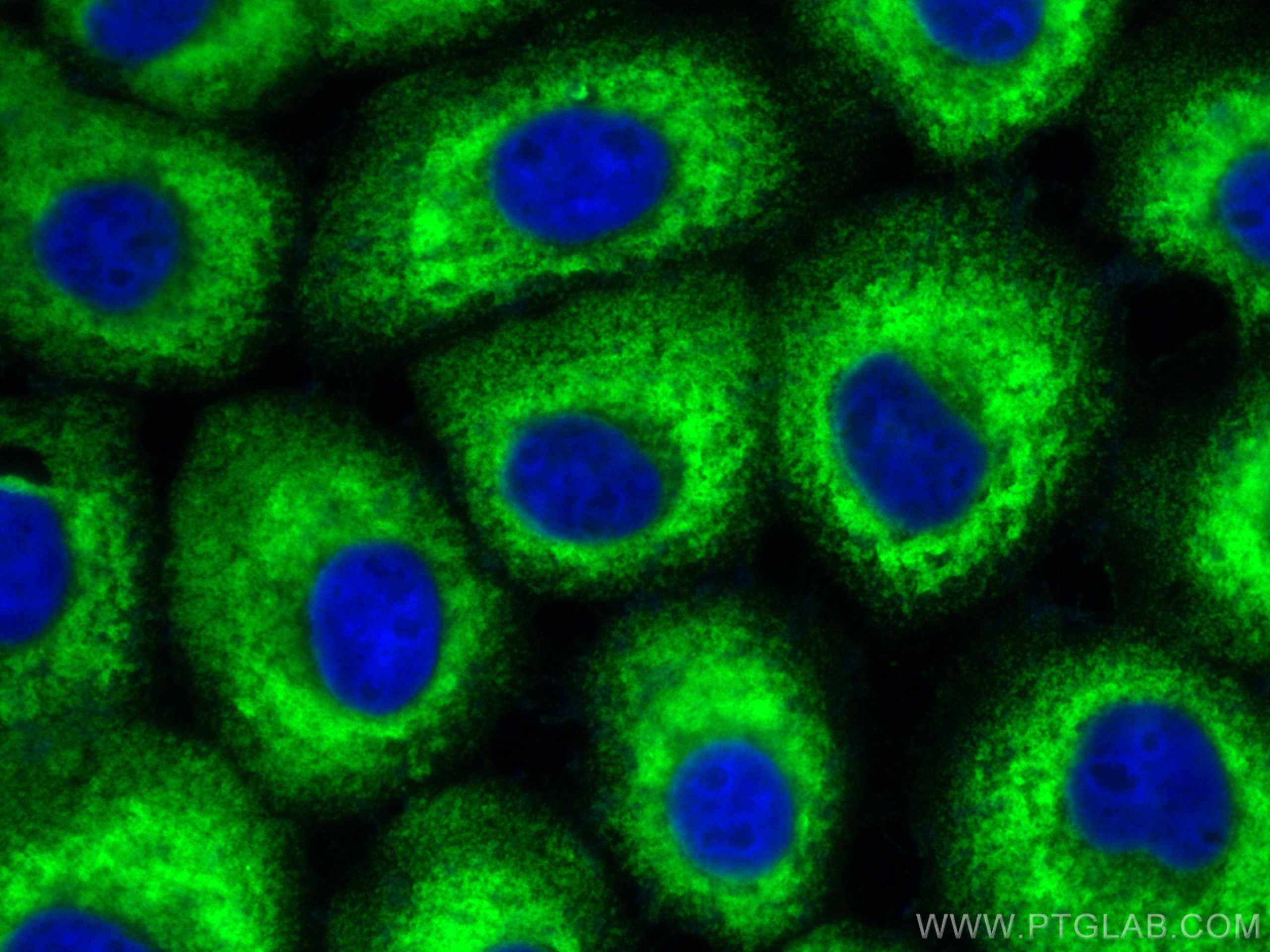验证数据展示
经过测试的应用
| Positive IF/ICC detected in | A431 cells |
For other applications, we recommend the unconjugated version of this antibody, 82677-1-PBS
推荐稀释比
| 应用 | 推荐稀释比 |
|---|---|
| Immunofluorescence (IF)/ICC | IF/ICC : 1:50-1:500 |
| It is recommended that this reagent should be titrated in each testing system to obtain optimal results. | |
| Sample-dependent, Check data in validation data gallery. | |
产品信息
CL488-82677 targets MX1 in IF/ICC applications and shows reactivity with Human samples.
| 经测试应用 | IF/ICC Application Description |
| 经测试反应性 | Human |
| 免疫原 | MX1 fusion protein Ag4692 种属同源性预测 |
| 宿主/亚型 | Rabbit / IgG |
| 抗体类别 | Recombinant |
| 产品类型 | Antibody |
| 全称 | Myxovirus resistance protein 1 |
| 别名 | IFI 78K, IFI78, Interferon induced protein p78, MX, MX1, MxA, Myxovirus resistance protein 1 |
| 计算分子量 | 662 aa, 76 kDa |
| 观测分子量 | 75 kDa |
| GenBank蛋白编号 | BC032602 |
| 基因名称 | MX1 |
| Gene ID (NCBI) | 4599 |
| RRID | AB_3673072 |
| 偶联类型 | CoraLite® Plus 488 Fluorescent Dye |
| 最大激发/发射波长 | 493 nm / 522 nm |
| 形式 | Liquid |
| 纯化方式 | Protein A purification |
| UNIPROT ID | P20591 |
| 储存缓冲液 | PBS with 50% glycerol, 0.05% Proclin300, 0.5% BSA , pH 7.3 |
| 储存条件 | Store at -20°C. Avoid exposure to light. Stable for one year after shipment. Aliquoting is unnecessary for -20oC storage. |
背景介绍
Mx1 (also known as MxA) is a GTPase that belongs to the Mx family of proteins, which are ubiquitous in eukaryotes and involved in the immune response to viral infections. The human Mx1 is localized in the cytoplasm interfering with the translation of viral proteins, whereas the mouse Mx1 accumulates in the nucleus and inhibits the primary transcription of viral RNA. Mx1 expression is induced by treatment with α/β IFN.
实验方案
| Product Specific Protocols | |
|---|---|
| IF protocol for CL Plus 488 MX1 antibody CL488-82677 | Download protocol |
| Standard Protocols | |
|---|---|
| Click here to view our Standard Protocols |
